Jean-Claude Biver Goes Back To The Start

This story is from About Time, Esquire’s free weekly newsletter devoted to the world of watches. Sign up here
It’s been said that what Jean-Claude Biver doesn’t know about watches isn’t worth knowing.
Let us examine the evidence.
Legend has it that the Luxembourg-born son of a shoe salesman became smitten with mechanical watches in the early 1970s while out jogging with his friend, Jacques Piguet.
The latter’s skeletonised watch impressed Biver so much he orchestrated a meeting with Piguet’s father. Soon he was employed by Frédéric Piguet, a movement manufacturer in Switzerland's Vallée de Joux.
Biver and Jacques Piguet worked together. Biver did the marketing, Piguet the production, a double-act proposition seen elsewhere in the industry, the same division having been used with Messrs Patek and Philippe, for example, and Audemars and Piguet.
From there Biver moved to Audemars, concentrating again on sales and marketing, before joining Omega as a product developer overseeing its gold watches department.
Omega was a global company he cared little for, and a job that “helped me to understand I was made not for the industry but for the artisans. My passion is the watchmakers, not the machines," he explained.
Biver would prove true to his word when the "quartz crisis" arrived from Japan, introducing cheaper and more accurate battery-driven watches from Seiko, Casio and Citizen, and making two-thirds of the traditional Swiss industry redundant.
It was generally assumed the only solution to the quartz crisis was to copy the technology coming from overseas: the Swiss government was convening meetings with watchmakers to work out how to best catch up.
Instead Biver and Jacques Piguet bought Blancpain, an old company that had fallen dormant during the 1970s and, in 1983, revived it, with a focus on luxury mechanical watches.
Ever the canny marketeer, Biver declared Blancpain had been making watches continuously since 1735, positioning it as the oldest and most traditional of all Swiss watch brands.
"With our slogan 'Since 1735 there has never been a quartz Blancpain. And there never will be', we were talking about credibility, patriarchal wisdom," he explained.
The move put the focus back on the Swiss to such an extent that today it has been credited with "single-handedly" saving the industry from extinction.
Biver sold Blancpain back to its original owners for a huge profit, remained CEO until 2003 and joined the board of directors for the parent company, now renamed the Swatch Group.
From there he was asked to develop the marketing and products for his old company Omega, which had once vied with Rolex to be the highest-profile Swiss watch brand, but whose sales and prestige had waned.
Biver set about tripling profits by improving product, signing Cindy Crawford and Michael Schumacher and making it a part of the deal that celebrities would make appearances on behalf of the brand at press calls, while also leaning into movie product placements.
The fact that James Bond wears an Omega is down to Biver.
Then, in 2004, Biver was approached to help the little-known brand Hublot. Under a philosophy of being "first, different and unique" he coined "the art of fusion" and launched the Big Bang, a watch line that married traditional materials like gold with modern ones like rubber, carbon fibre and Kevlar.
Just four years later in 2008, the LVMH Group – owners of Tag Heuer and Zenith amongst others – acquired Hublot for almost half a billion dollars, and subsequently made Biver the head of its watch division. Today Hublot has a net worth estimated at £90bn.
At LVMH Biver next got stuck into Tag Heuer, reducing its high-end luxury aspirations and turbocharging its success by focusing on less expensive volume models. He also retuned some vintage Heuer models to the catalogue, and introduced the Tag Heuer Connected smartwatch.
Biver retired on health grounds in 2018, leaving behind not just a giant reputation as a product and marketing genius, but one of a charismatic leader and a workaholic. Many of the watch world's most prominent figures, including Frédéric Arnault, the current CEO of LVMH Watches, are said to have benefitted from his guidance.
In 2020 he added to his heaving shelf of watch industry awards by accepting the French Legion of Honour.
After that, Biver focused on cheese.
He has been producing handmade cheese since the 1970s, each year making around five tonnes of the "nutty and sweet" L’Etivaz, a hard cheese from the cows on his farm in the Swiss Alps. Biver's cheese is not for sale. Instead, he gifts it to friends and family, while also supplying select restaurants of his choosing.
No less than The Economist has described this as a example of Biver's masterful grasp of the value of rarity.
“I will be the master of my cheese until the last piece,” he has explained.
So, it was big news when, last March, Biver gathered a crowd of 150 partners, retailers, collectors and journalists to a three-level 1890s farm building in Switzerland to unveil his return to watches.
This was the launch of his own brand, named Biver, and founded with his 22-year-old son, Pierre.
Their first release was the Carrion Tourbillion Biver.
The technically adventurous gold minute repeater sounded different notes for hours, quarters and minutes – most minute repeaters come with two, not three, gongs – and featured one of two stone dials, grey obsidian or blue sodalite.
For these ultra high-end, artisanal watches Biver had once again fused old-world techniques with modern material science, but this time there was also a focus on hand-applied finishes and engraving.
There was a lot going on.
Initially produced in a run of 12 the Biver Carillon Tourbillon Minute Repeater cost £440,000.
The response to the watch was mixed.
People questioned the preposterous amount of money. Others took issue with the look of the thing.
“He has failed miserably,” wrote one reviewer. “An emoji that can accurately describe my feelings 🤮” offered another. Hodinkee declared it “the most controversial release of the year”.
Biver recently announced its second watch.
The Biver Automatique is billed as “the brand’s first three-hand automatic watch”. An altogether simpler, more classical dress watch – at least on first glance – it comes in two options. One in a 18k white gold case with dial, hands and markers to match, and one in an 18k rose gold case with dial, hands and markers to match.
There are also “Atelier Collection” options in two precious stones – pietersite and obsidian.
The watches all come with a zero-reset mechanism, which snaps the second hand back to 12 o’clock when pulling out the crown – allowing for precise time-setting.
Prices for the Automatique range from CHF 78,000 [£70,000] to CHF 108,000 [£97,000].
This time, the response has been more 🔥.
Two months ago Biver – the brand – was joined by a new CEO, James Marks.
Marks’ career has not been quite a stellar as Biver’s but he is no slouch.
A former hedge fund portfolio manager and longtime watch nut, in 2018 he became a “horological globetrotter” for Phillips in Association with Bacs & Russo, the auction house, tracking down some of the world’s best and rarest watches.
The following year he opened Phillips Perpetual, the then-novel concept of a permanent boutique on the third floor of the auctioneers’ London offices in Berkley Square, where watches by the likes of Patek Philippe, Rolex and F.P Journe are offered for sale all year-round, not just in auction season.
One of Marks’ earliest hires was Pierre Biver as an intern.
He’s also often been called upon by journalists – not least this one – to provide sober and analytical opinions on the market, brands, industry news, or pretty much anything else related to luxury watches.
I spoke with Jean-Claude Biver and James Marks last month - but not Pierre. He was with his partner at the hospital on account of the fact they’d had just their first baby.
Jean-Claude, now 74, had just returned from meeting his new grandson.
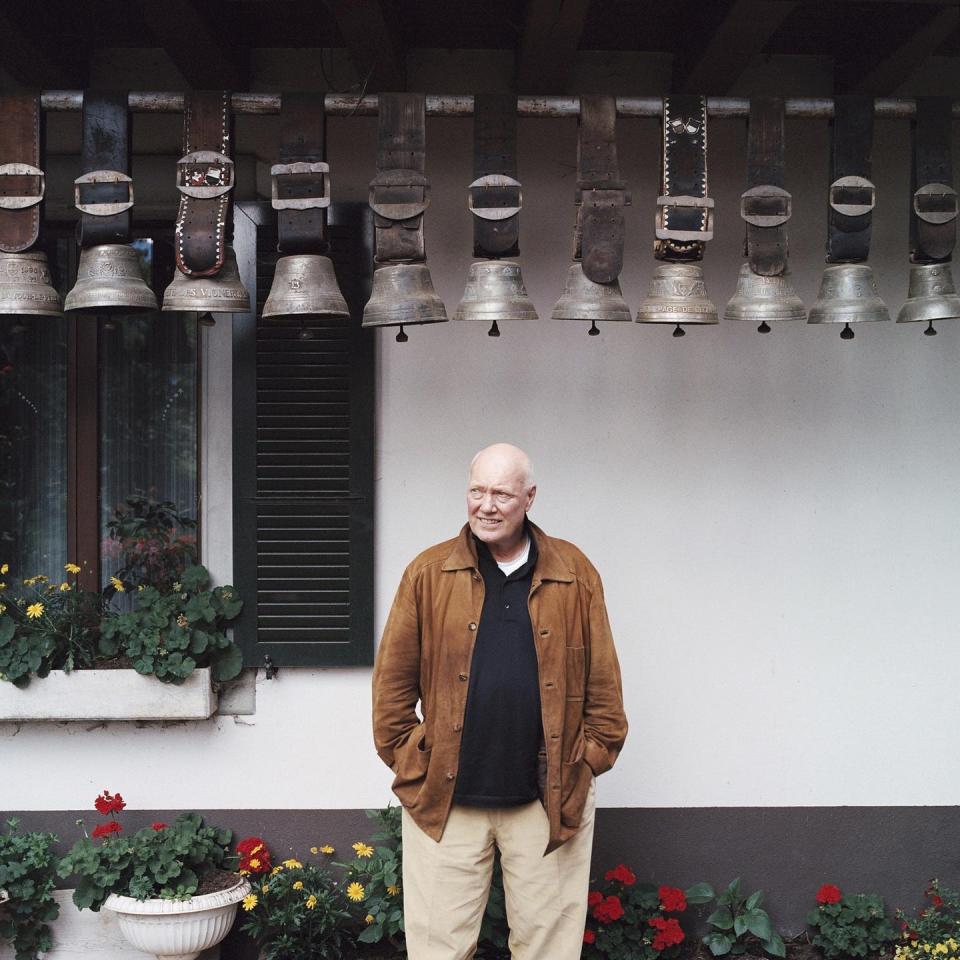
Hello, both. Thank you for speaking to us. Congratulations on your news, Jean-Claude.
Jean-Claude Biver: Thank you very much!
James Marks: It’s been a busy week. But a fruitful one.
Jean-Claude, was starting your own watch brand always on the cards?
J-CB: I started in the watch business in 1973. So that’s 50 years ago. And the first brand that I really developed was Blancpain. Blancpain was a private brand – I bought Blancpain together with Jacques Piguet. We paid CHF 22,000 [about £65,000 today]. And I never forgot the part that Blancpain paid [in my life]. Even though I sold the brand [for CHF 60m, or £155m today]. The brand has always remained in my heart.
Why that brand in particular?
J-CB: I always remember how comfortable and how exciting it was to work for yourself. After Blancpain I had no more chances to work for me. I worked for Swatch Group – I worked for Mr. Hayek [Nicolas Hayek, CEO]. I worked for LVMH. I did a lot, and I must say, I was very privileged to do all that. Then I finished my career when I was 70. And I had one regret, not to do the next Blancpain. And that was what excited me, and what gave good motivation. “Come on, let’s finish my career like it started – with my own brand. I will call my own brand Biver. I will take my son with me, and we will work as a private company. And we will work in the spirit of Blancpain”. And that was the idea. To finish my career like I had started it.
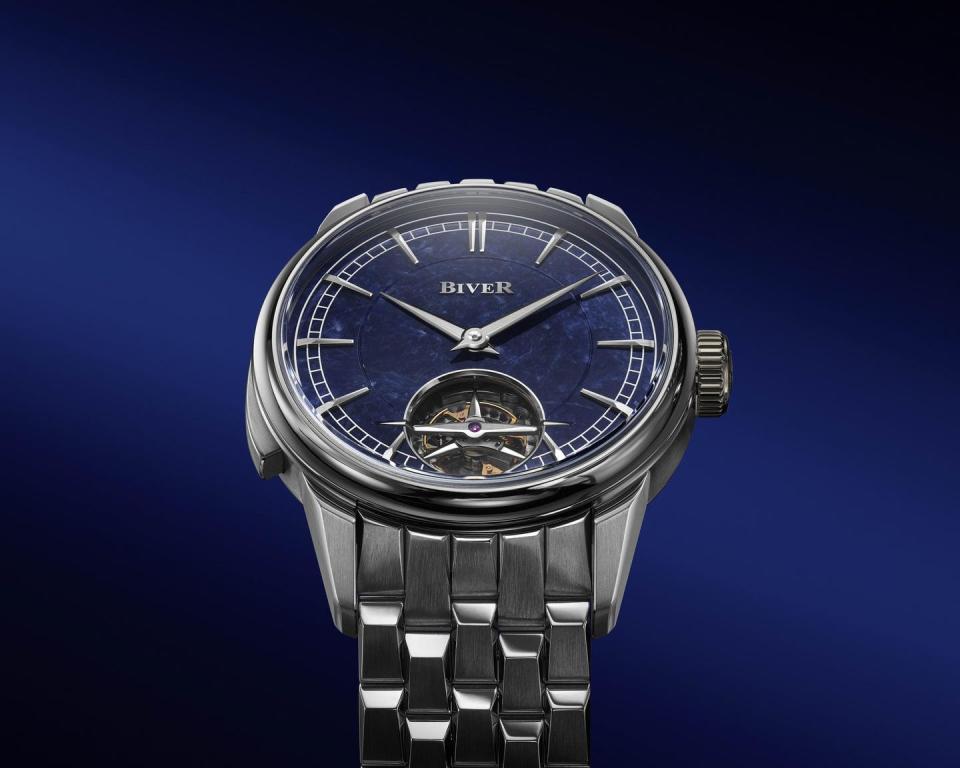
With the look of the brand, was the intention always to have this mix of classic and modern styles?
J-CB: Yes, I would say that. I call it “new classic”. This new classic look is my personal favourite look. And I want to say something that is important. I am in love with today's watches. The watches I produce now I think are the most beautiful ones that I have ever done. I’m really in love with what I’m doing. And I don’t see what I could do to make them any more attractive. I think what we have achieved [is great]. I was not alone, my son helped me – from the finishing of the movement, the design of the hands, of the indexes, of the dial, of the bezel… I think we are close to perfection. And I believe when you come close to perfection, you also come close to eternity. Perfection is linked with eternity. And that is, for me, the biggest excitement. How can I, as a living guy, touch eternity? Not only touch eternity once I have died, but touch it as long as I’m alive? And I think that’s we have achieved. And I have no shame to say this – I have many watches in my collection, but not one I love more than what we are doing with Biver.
How would you define "new classic"?
J-CB: They don’t have to look old-fashioned. It’s a new thing – it’s classic, and modernity. The two elements are in the same case, at the same time, that is what we’ve achieved, I believe. The modernity is giving some tension to the classic.
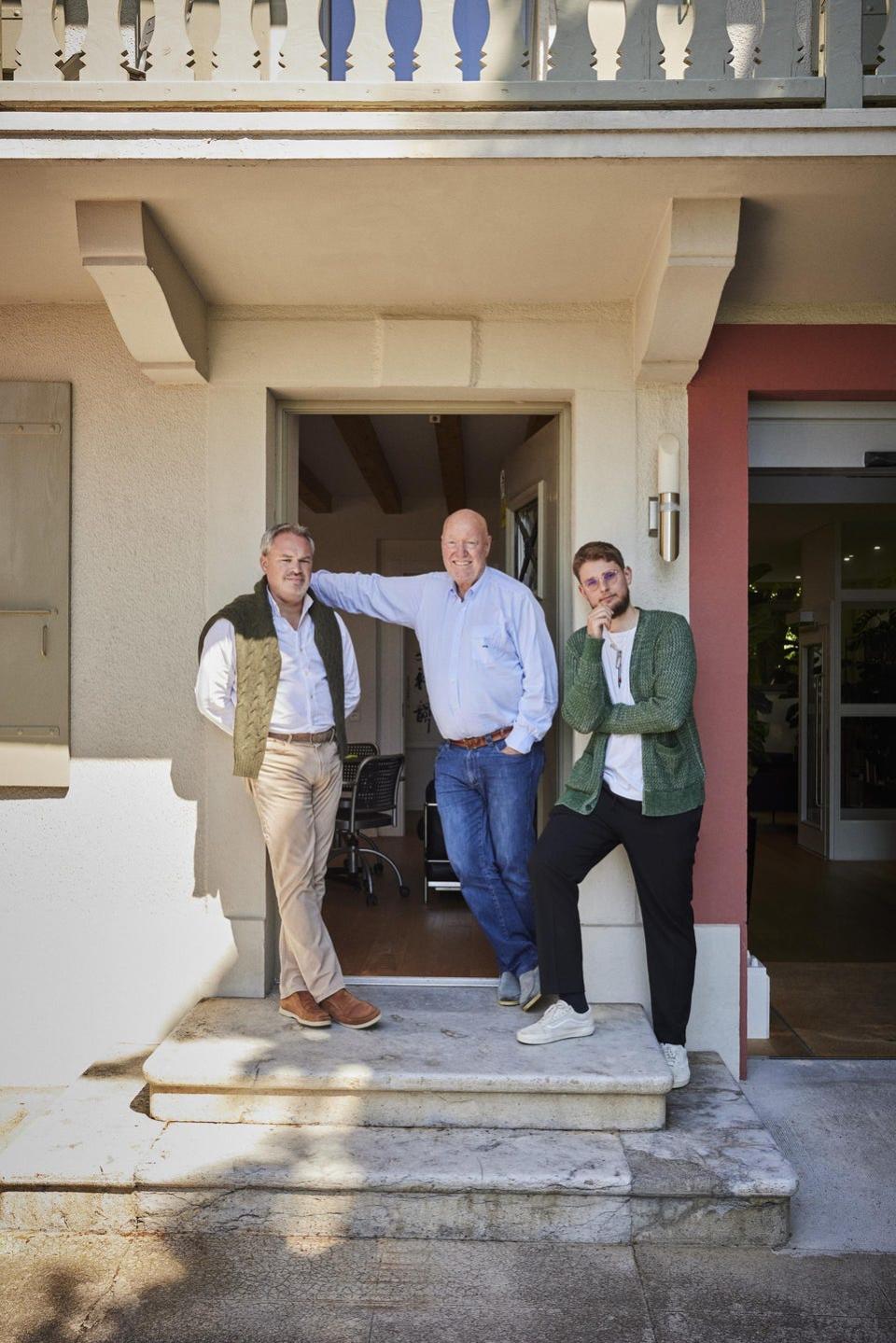
Do you and Pierre have similar taste in watches? At different times you have both done YouTube videos taking through watches in your collections.
J-CB: Pierre and James [Marks] – these two have done my private collection! I have spent my own money. But from the taste and the selection I had the two best advisors – James and my son.
JM: It’s an important point, Johnny. What people should also remember is that Jean-Claude has always been one of the most prolific collectors of watches. It’s a collection that spanned many, many decades. From the earliest, greatest Patek grand complications to very modern Rolex, to the very modern independents such as [Philippe] Dufour. Through his collection, he has touched every element of both the vintage and the contemporary market. And you can see that in the design of his watches. But also, Jean-Claude has been a prolific lover of cars, of art, of wine. He understands the concept of luxury better than many others that exist in the market today. And it’s that experience, not just as a CEO, but just as one of the world's great collectors of aesthetically beautiful objects, that inspires the collections we present today.
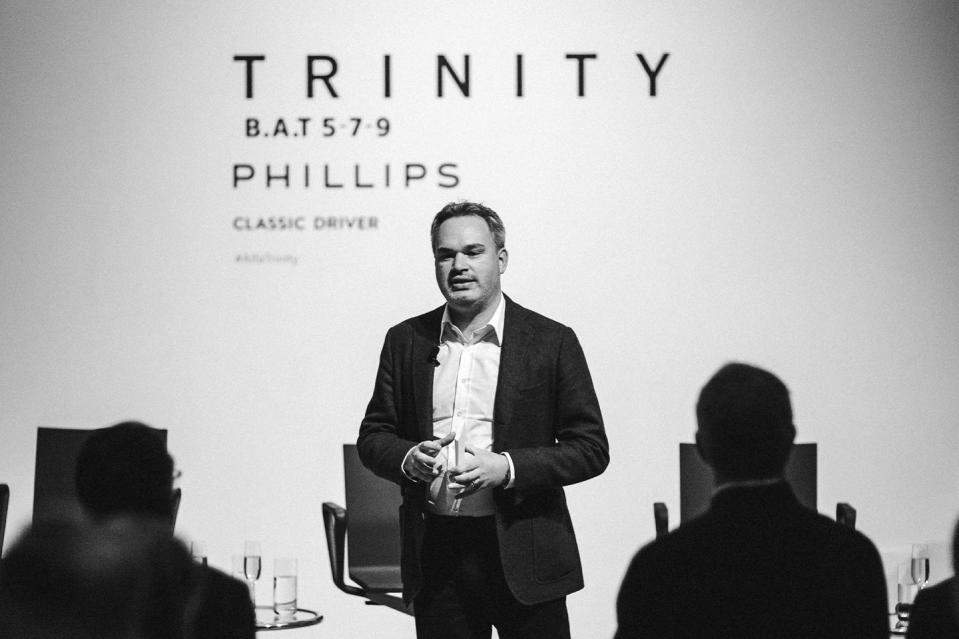
How were you approached to join the brand, James?
JM: I was offered an opportunity with Jean-Claude in two ways. First, to work with him in an advisory capacity with his own collection. He’s not a collector who could be pigeonholed into one thing: “I must collect Patek coronagraphs” or “I must collect manual-wind Daytonas”. His tastes have evolved with the market and a lot of times, Jean-Claude has been a tastemaker for the collectors of the modern generation.
Because throughout 50 years of his career, he has been a CEO, but he’s also been a tastemaker. I remember when we launched Perpetual in London in 2019 that, to everyone’s great surprise and delight, Jean-Claude sat on stage with me wearing a Rainbow Daytona [fabulously OTT gold and diamond-set Rolex, with a bezel festooned with multicoloured sapphires]. And from that point onwards, the market was fascinated with gem-set Daytonas.
How else would you characterise Jean-Claude’s impact on the watch market?
JM: The contemporary market today would not exist in its current form – whether it be the designs of the packaging, or the marketing that goes into a watch – without those innovations, and the vision of Jean-Claude. So, we are incredibly lucky as a brand. But also to work with Pierre, with a very similar profile in terms of his tastes, but free from all of the preconceptions that you have with 50 years of working with big brands. He has this almost childlike freedom to design and to create, free from all of the noise that comes from such a big career in the industry.
The first Biver watch was highly complicated. This new one is more straightforward. What was the strategy there?
JM: The strategy was simple. We wanted to highlight to the world what we can achieve through complication – and principally through finishing. It would have been very easy to come to market with a simpler watch. But we wanted to show our philosophy, our creativity, and most importantly our ability to produce not only the most beautiful watches, but the best-finished watches. And with the Carillon Tourbillon, we expressed a desire to master the invisible. We went beyond what a lot of brands would do to ensure that every facet of the watch was beautifully finished. We felt it would be easy [just] to do a minute repeater – we extended ourselves with a tourbillion. And remember this is a grand complication that has a water resistance [an unusual addition, since people don’t tend to want to go swimming with highly intricate watches]. So, it’s a modern grand complication. It’s a daily grand complication. And this is a watch we’re extremely proud of, because it was the first step in our journey. And we didn’t just take a step like a child that learns to walk. We took a huge leap because we have belief in our philosophy.
J-CB: I was a friend of Maurice Béjart [dancer/choreographer noted for developing a particularly expressionistic form of modern ballet]. I was on the board of the Béjart Ballet Lausanne [in Switzerland]. And he always said to me “Before my dancers interpret my modern art, I want them to perfectly know how to dance classic dance.” And I wondered about this. I said, “Why do you need the classic?” He said, “Because that’s the base. You can only build on a very solid base, and the solid base is classic”. And it’s the same in the watch industry. Before you start to be fancy, let's first dominate 100 per cent the classic side. And once you have that, then you can build some fantasy.
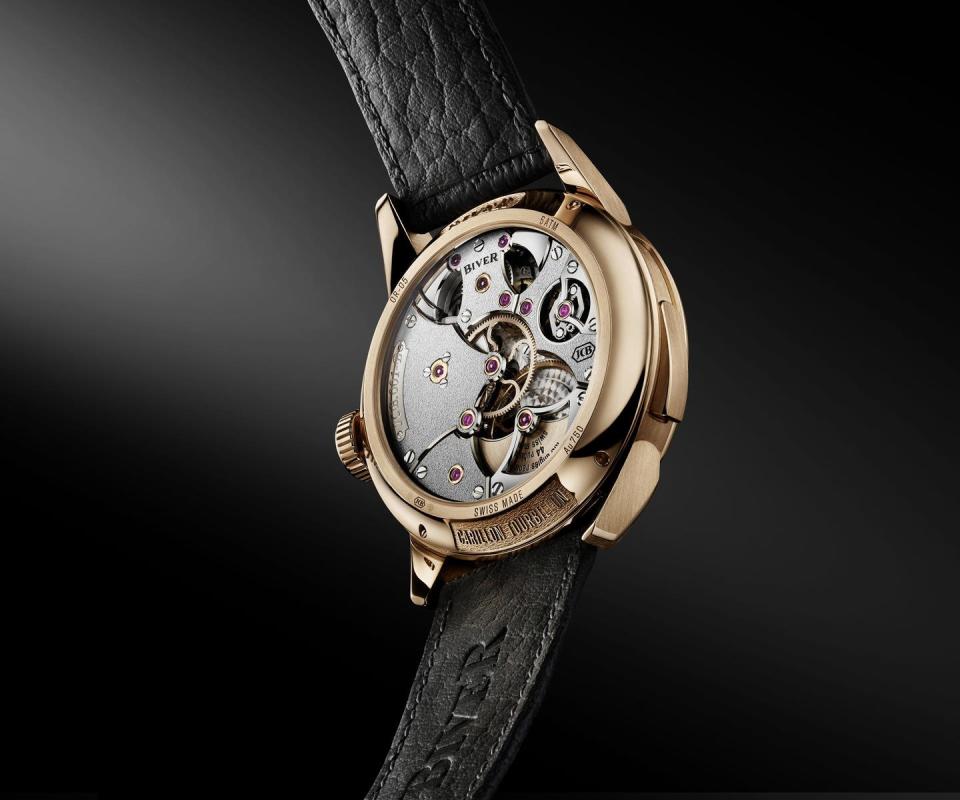
You mentioned the freedom of being an independent away from the corporate structure of a big brand. But that also means you must start from a base level and reach out to dial makers and makers of hands and cases, and so on. That sounds like a challenge.
JC-B: It’s a privilege! There is no limit. Ha ha! Not only in the budget, but also limits in the production. Because when you belong to a group and the group owns a dial maker, you have to go to the dial maker of the group. Independence brings freedom. I always had to follow instructions or budgets or different goals. Now I have the 100 per cent freedom back again.
One imagines most suppliers picked up the phone.
J-CB: Yeah! Because they found that I am a good advertiser [for their businesses]. If people know that [a Biver] dial comes from this person that brings some resonance.
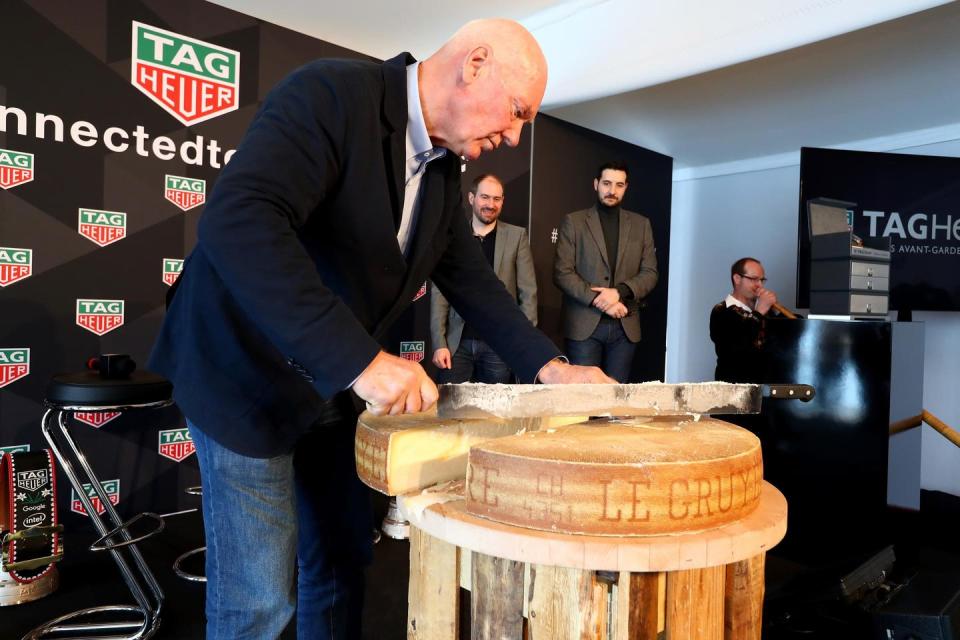
You mentioned the freedom of being an independent away from the corporate structure of a big brand. But that also means you must start from a base level and reach out to dial makers and makers of hands and cases, and so on. That sounds like a challenge.
JC-B: It’s a privilege! There is no limit. Ha ha! Not only in the budget, but also limits in the production. Because when you belong to a group and the group owns a dial maker, you have to go to the dial maker of the group. Independence brings freedom. I always had to follow instructions or budgets or different goals. Now I have the 100 per cent freedom back again.
One imagines most suppliers picked up the phone.
J-CB: Yeah! Because they found that I am a good advertiser [for their businesses]. If people know that [a Biver] dial comes from this person that brings some resonance.
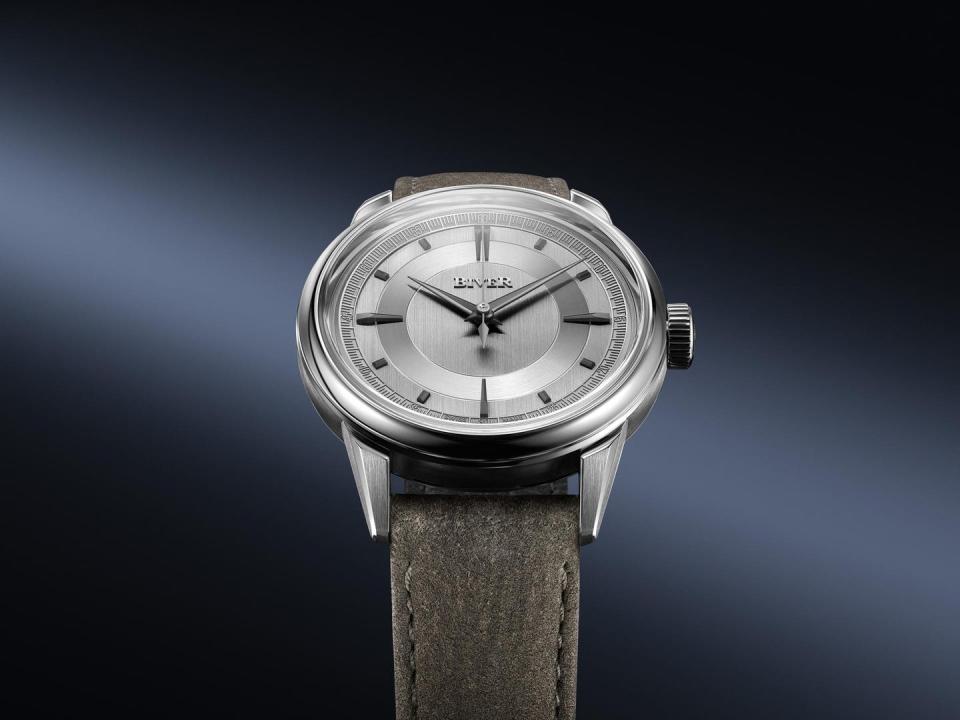
Tell me about this new watch, the Automatique.
JM: We wanted to produce something where all of the lessons of finishing and quality from the [previous] grand complication were expressed in a simple three-hand watch. In many ways, producing a three-hand watch is harder than the grand complication. Because the grand complication wows you with an exposed tourbillion or the sound of a repeater. But to truly master a three-hand watch is incredibly difficult. We approached it first from the level of movement finishing. Think of 40 screws in a movement, where, with black polishing [technique used to create a mirror-like finish on steel parts of watches] each screw takes 47 minutes to polish. Not many brands go to that level. Then our three-hand watch has a zero-reset function. Because we appreciate our collectors and our clients are seasoned. They understand high horology, so we wanted to offer them a twist. We also feature, within the Atelier Series, two amazing stone dials. Think of another brand that offers a stone dial in a three-hand watch. I’ve been fortunate enough to handle, in my previous career, many, many, many great watches. And I honestly believe this is one of the nicest, most beautiful and elegant three-hand watches on the market today.
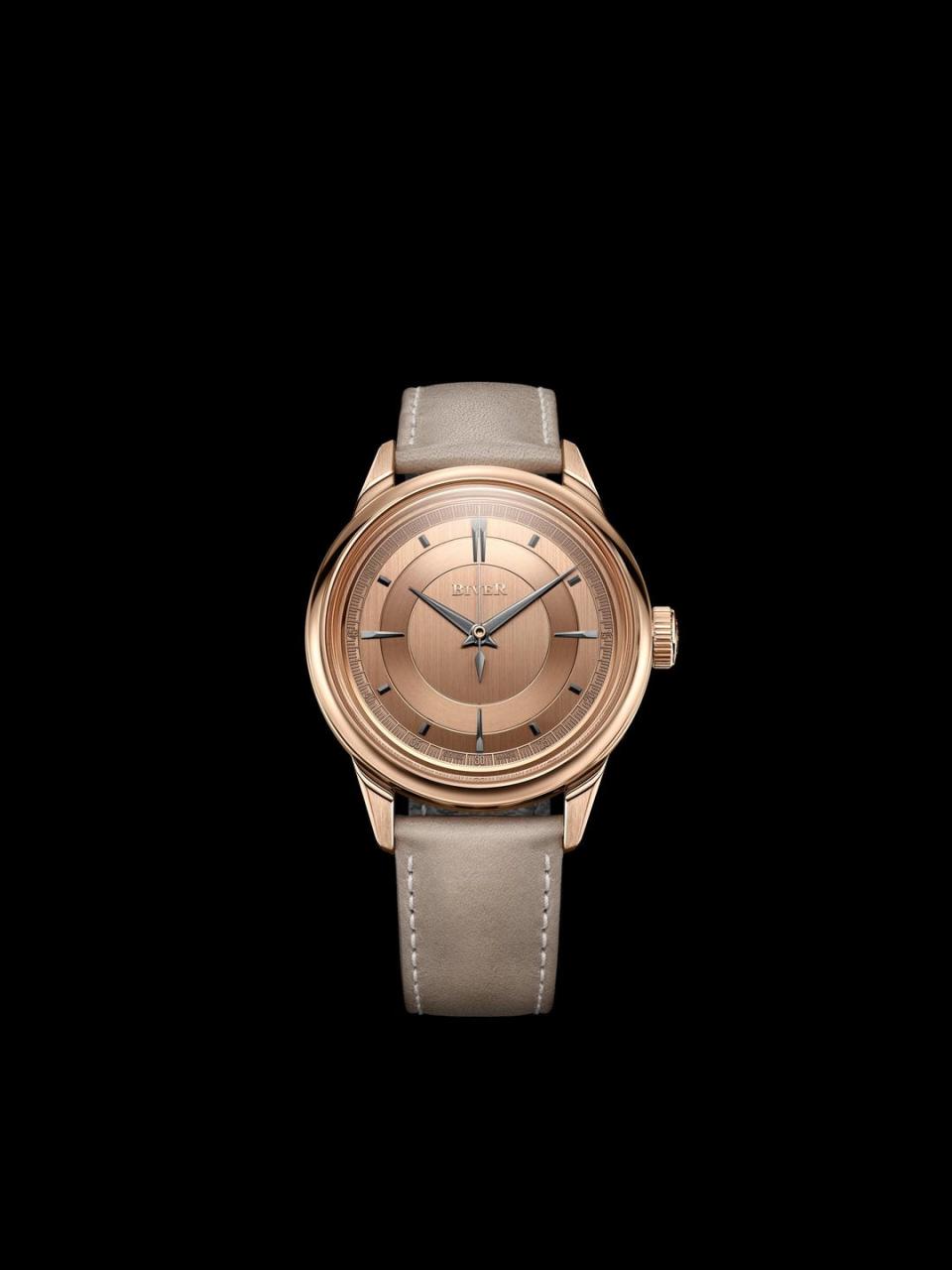
And how many will there be?
JM: In the two gold dial options, there will be 25 of each. And in the Atelier Series, which is the stone dials, there will be 18 in pietersite and 18 in obsidian. That’s all of them. And no two stone dials will ever be alike. We’ll only produce a number that can maintain the quality that the brand insists upon.
You mentioned collectors. Who is the Biver customer?
JM: The beauty we have with the Biver brand is we have two types of collector. We have a very young, dynamic collector base coming through that resonates with Pierre and his understanding of contemporary culture. But of course, seasoned collectors understand Jean-Claude. They therefore understand the philosophy of the brand.
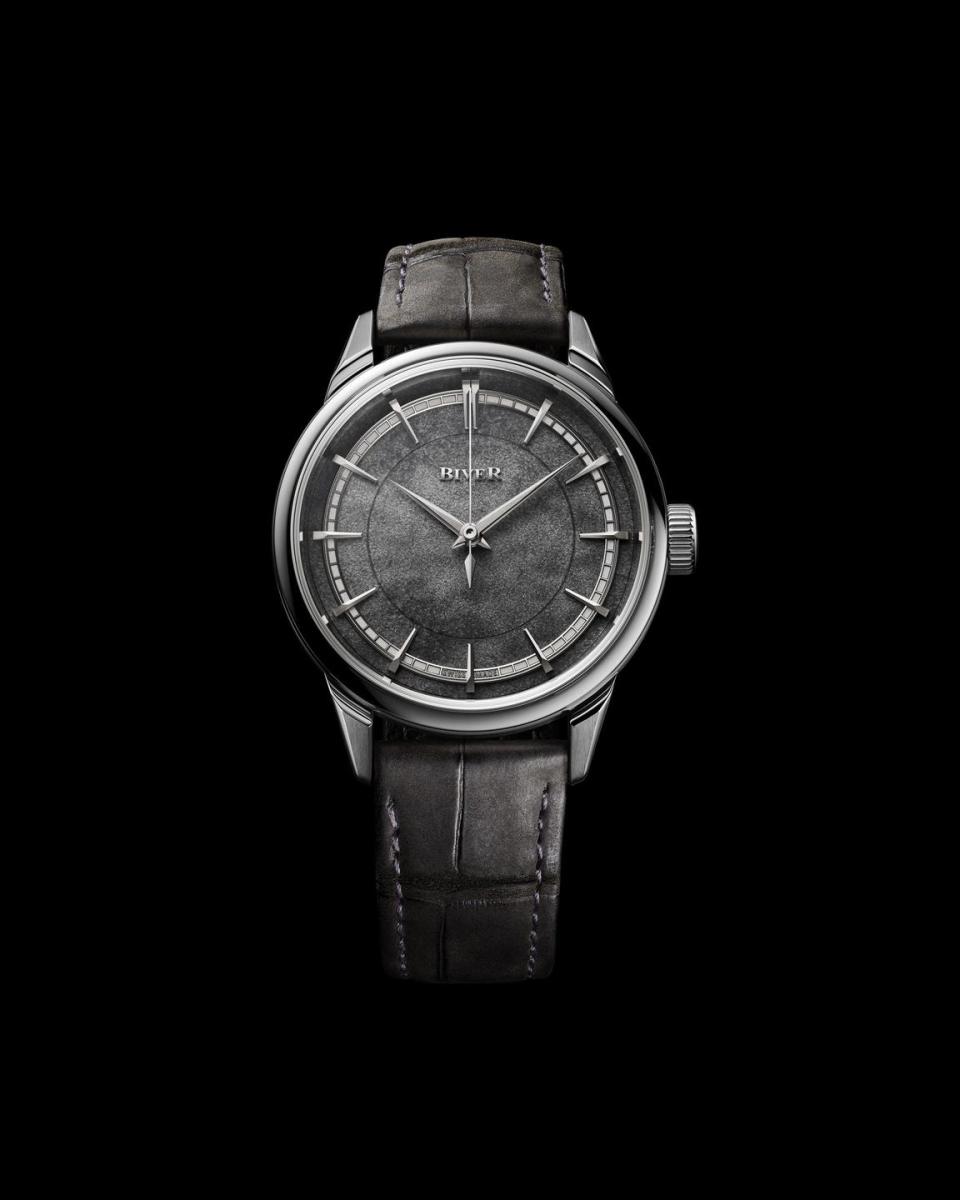
Not everyone was convinced by the first watch.
J-CB: My approach there was: “What do I like as a collector?” And I think: “If I like it, other people will also like it”. I wanted to have a brand with personality. So who should I follow? I should follow the taste of Mr. Biver. And that’s not so difficult. Because I am Mr Biver!
Still, some people were a bit unsettled by…
J-CB: …so, it’s a very egotistical approach. But at least it will show what a person like Mr. Biver likes! And if this is the sort of thing I like after 50 years in this business, there’s the justification. That was my research! Why tell people “why”? Why, after 50 years you like this type of style or this kind of materials? You can’t!
JM: Some people say, “Oh, the watch was quite controversial”. Yeah, it was a very modern interpretation of a grand complication. To that I would add the following: “What would you expect from the biggest disrupter in the watch industry in 50 years?” Some people say, “But the watch is quite Marmite”. You know the English expression ‘You love it or hate it”? But we’re practically sold out. There are 50 collectors out there that have bought into the philosophy, understood the philosophy, and without this incredible first launch, the first step for the brand, we wouldn’t have the three-hands, and we wouldn’t therefore have the outreach that’s going to follow in September, when we launch with this to another set of new clients with a larger volume.
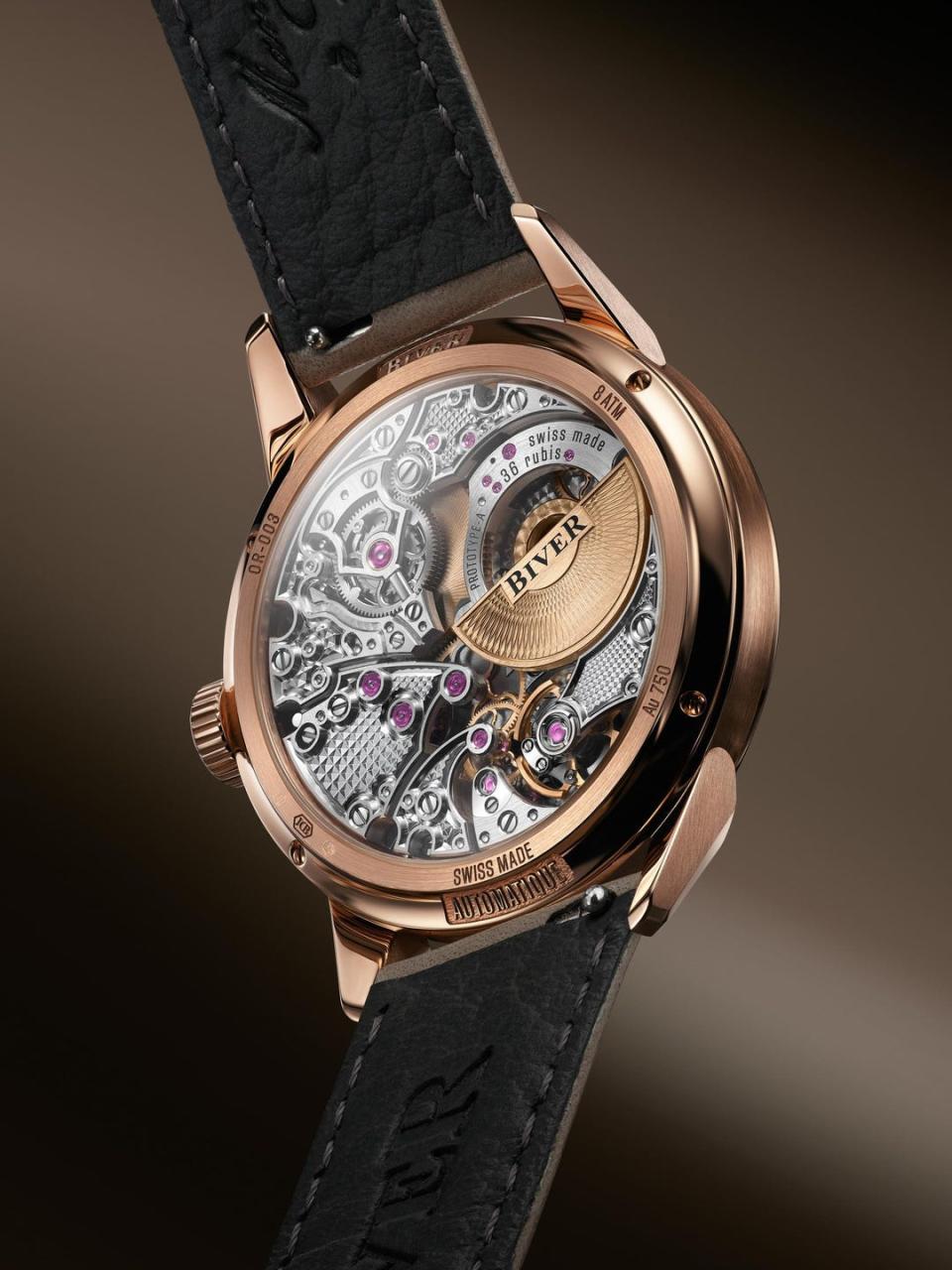
The Automatique uses another new movement, the Calibre JCB-003. Is that something we'll see in other watches?
JM: Yes. We developed it with [esteemed Swiss manufacturers for clients including Rolex, Audemars Piguet and Richard Mille] Dubois-Depraz. It’s an amazing movement. Not just from a finishing point of view, but from a technical point of view, with the zero reset and a 65-hour power reserve. But it’s also a modular calibre [a base timekeeping mechanism that other complications can be built on top of] which in the future will allow us to develop other product lines. I wish I could show you some of the ideas we have for the calibre now, because I think the market is going to be incredibly impressed with where we lead, following this release.
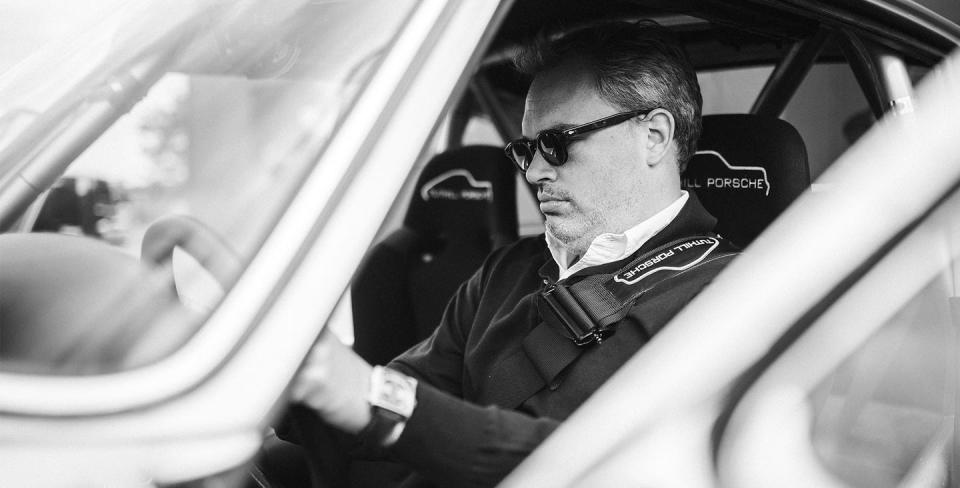
A chronograph, perhaps?
JM: I would love to do a chronograph. Jean-Claude and I are both lovers of classic cars. And there’s no finer complication for car lovers than chronographs. It’s something we would love to explore.
Your prices caused some consternation, even in the world of high-end luxury watches. Would you do something more attainable?
JM: Well, the three-hand is exactly that.
It’s 78,000 Swiss francs.
J-CB: It’s an expensive watch, if I may say. Eighty thousand Swiss francs for hours, minutes and seconds is quite expensive. And why? Because the finishing of a minute repeater movement and the finishing of a three-hand movement is the same! There is no difference! The screws are polished in the same way! The back of the dial is polished and decorated the same. The exception is that one is sold as a minute repeater, so it has a certain price. The other one is sold like a three-hand, so it also has a certain price.
We shouldn’t hold our breath for a watch for say, 10,000 Swiss francs, then?
J-CB: I would doubt it. For 10,000 Swiss francs you could buy from me, eventually, the screws.
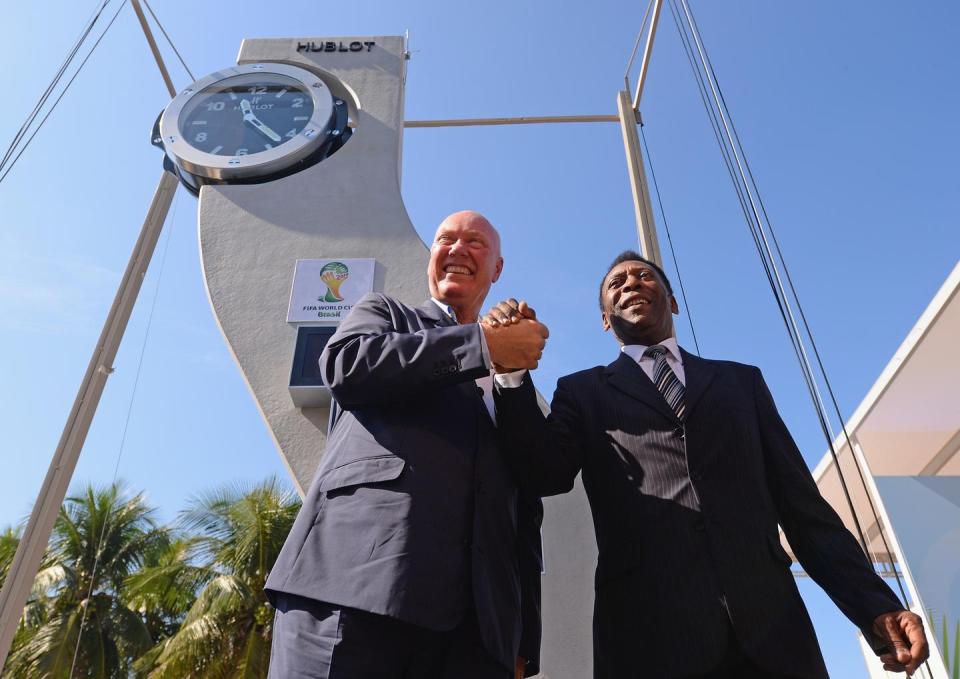
The word “disruptor” is often used to describe you, Jean-Claude. What did you think of the MoonSwatch, from your former employers at Omega/ Swatch? Possibly the most disruptive watch in recent memory.
J-CB: What do I think about it? I’m happy I’m not the boss of Omega! When someone does the same watch as you, but at another price and in another material!
JM: I think what we all agree on is that one of the beauties of the MoonSwatch is that both Swatch and Omega are now known to a new generation and a new client base. So that as they grow in age, they’ll remember that brand. And I think that's also true at Audemars Piguet, when they did the Marvel editions [Spider-Man themed watches, and so on]. I think you have to commend them for being brave.
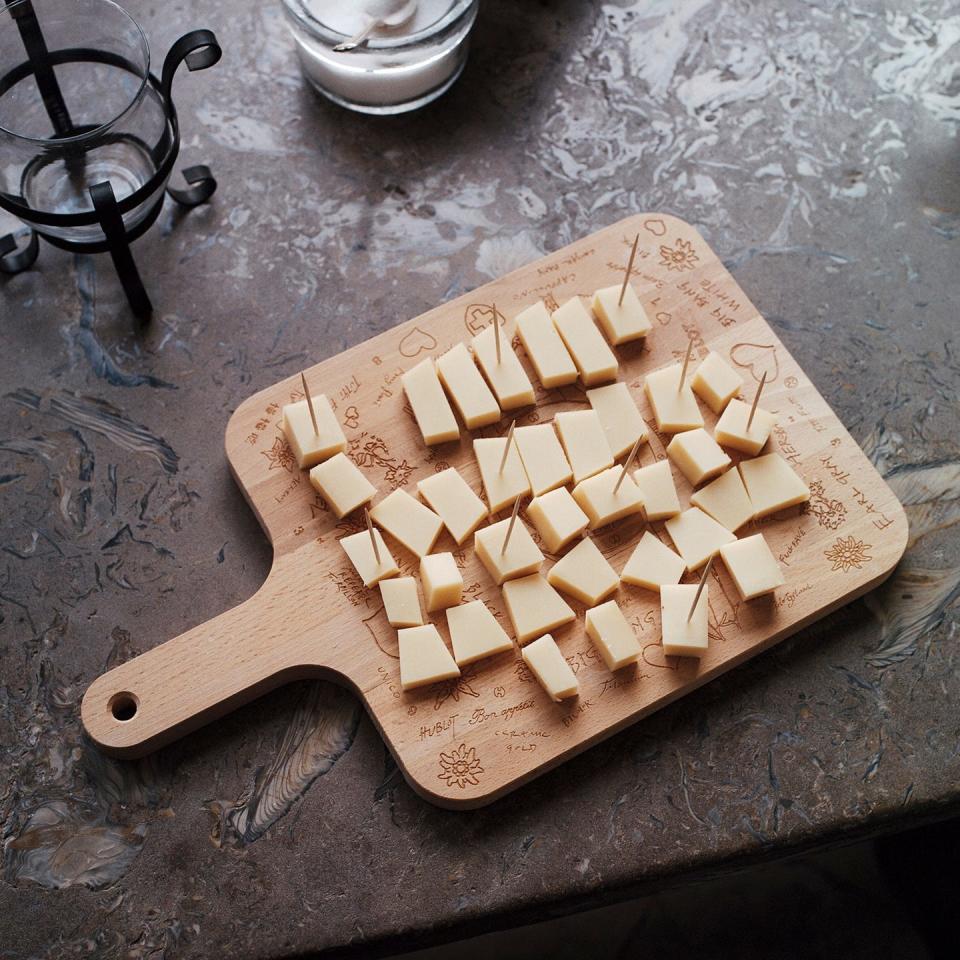
In building the Biver brand, is there a company whose trajectory you take inspiration from? Who gets it right?
JM: I’ve always been incredibly motivated and inspired by the Porsche Group. They’re not dictated to by fashion or by marketing trends or the appeal to a demographic. With the 911 they have a design philosophy, and their belief is that you develop the very best product that’s available at the time. And I think Jean-Claude and I both share the belief that we create a design philosophy, that we master the quality, we master the complexity – which is very similar to what Porsche has done with the 911. From both a commercial point of view and from a philosophical point of view.
J-CB: What an extraordinary example of eternity. Because when did the 911 come out?
JM: 1963.
J-CB: And so, after more than 50 years you can say it is 100 per cent the same, and it is 100 per cent different!
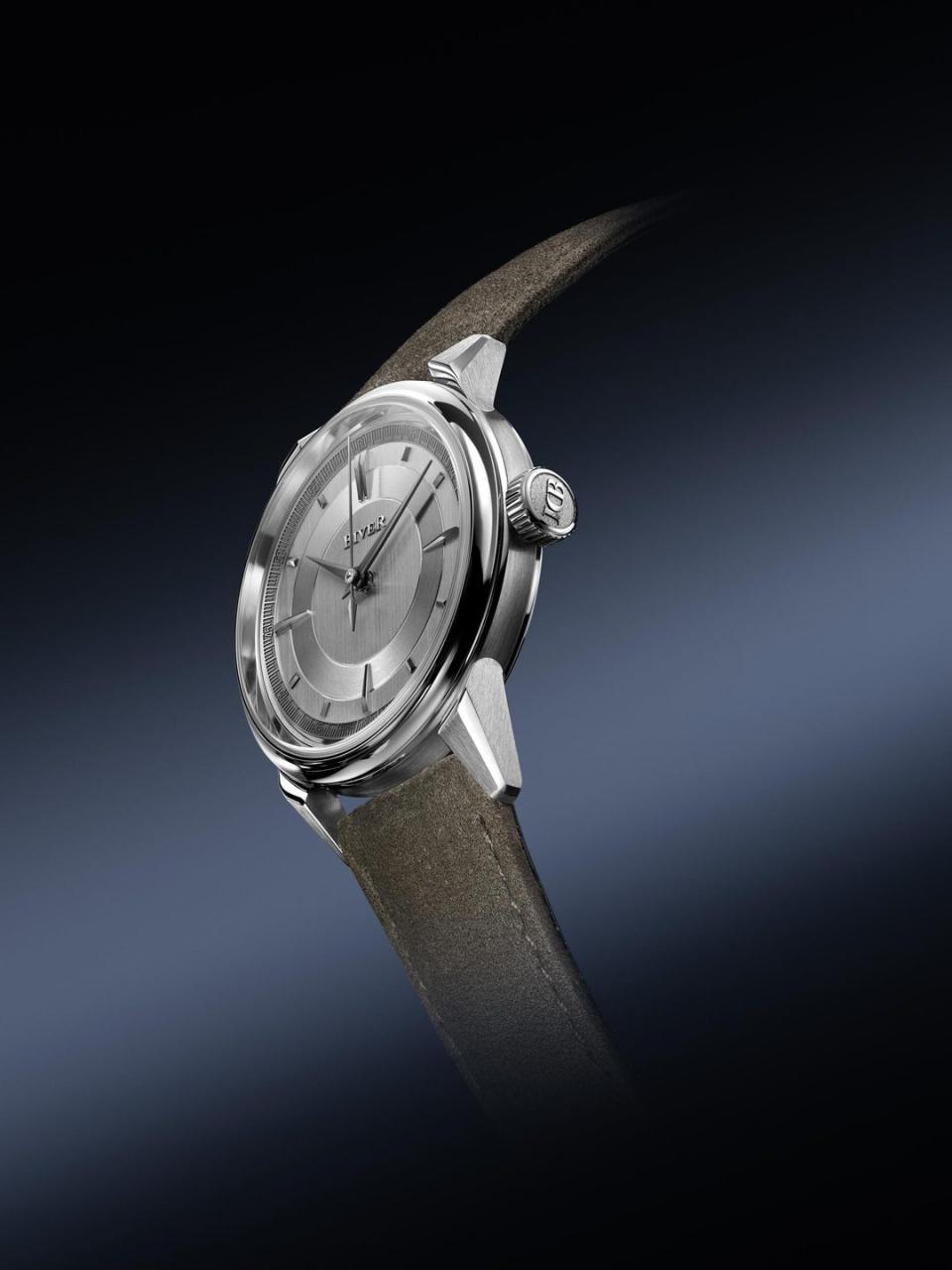
JM: I think that the 911 really relates to the launch of the three-hand, Johnny. It was the very best, the very finest – but also something you can go everywhere with. That’s exactly what we did with the Automatique.
You Might Also Like


